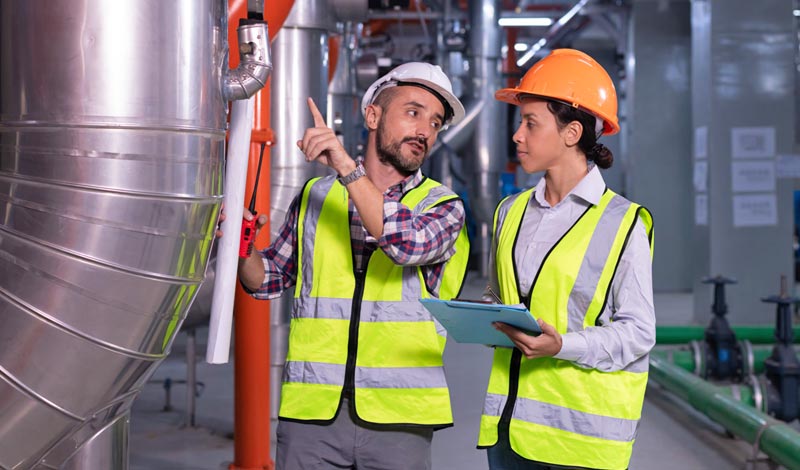Chillers provide crucial cooling for air conditioning and refrigeration, but they use a lot of energy. If you’re looking to reduce your chiller energy costs, start with these low-cost operational strategies to improve system efficiency and performance.
1. Use controls to sequence chillers
Chillers rarely operate at full capacity, and their efficiency drops as the load decreases. An ideal capacity for maximum chiller efficiency is between 60% and 80%. Efficiency drops significantly at loads below 50%. Monitor the capacity of all chillers in the plant and switch them on or off to keep them operating in their most efficient zone.
2. Go with a variable flow
Many legacy chiller systems are designed using a constant primary flow arrangement, which uses constant speed pumps in front of the chiller. A three-way valve is placed on the discharge of each coil to maintain the set-point temperature of the air leaving the coil. Changing to a variable primary flow design using two-way valves can reduce energy consumption by 50% to 75%.
3. Manage water temperature
An often-overlooked method for improving chiller efficiency is managing water temperature. We’ll look at three strategies — delta T, approach temperature and chiller lift.
- Delta T is the temperature difference between the chilled water supply and chilled water return. A low delta T forces chilled water pumps to work harder than necessary to produce the needed cooling.
- Condenser and evaporator approach temperatures are important metrics that can impact chiller efficiency. Low approach temperatures indicate good heat flow between water and refrigerant.
- Chiller lift is the temperature difference between the outgoing condensing and evaporator water. It represents the energy balance between the cooling tower fan and compressor operation. A lower lift is better.
Use an energy management system to monitor and evaluate these metrics and operate chillers at the optimum efficiency for every load condition.
Preventive maintenance pays off
The following preventive maintenance activities will keep your chiller system operating at peak performance:
- Record refrigerant temperature and pressure, as well as water loop temperature daily.
- Inspect the entire system on a scheduled basis, following the manufacturer’s recommendations.
- Regularly check for problems such as refrigeration leaks, tube corrosion, sticking dampers and worn seals.
- Check compressor operating pressures and analyze compressor oil annually.
- Examine all motor terminals and monitor amperage draws.
Calibrate the temperature and pressure gauges and the water flow meters regularly to ensure accuracy. It’s also important to monitor and control the evaporator and condenser temperature and water flow rate.
By combining low-cost operational strategies with targeted maintenance measures, you can improve chiller system performance and save money without a big financial investment.
